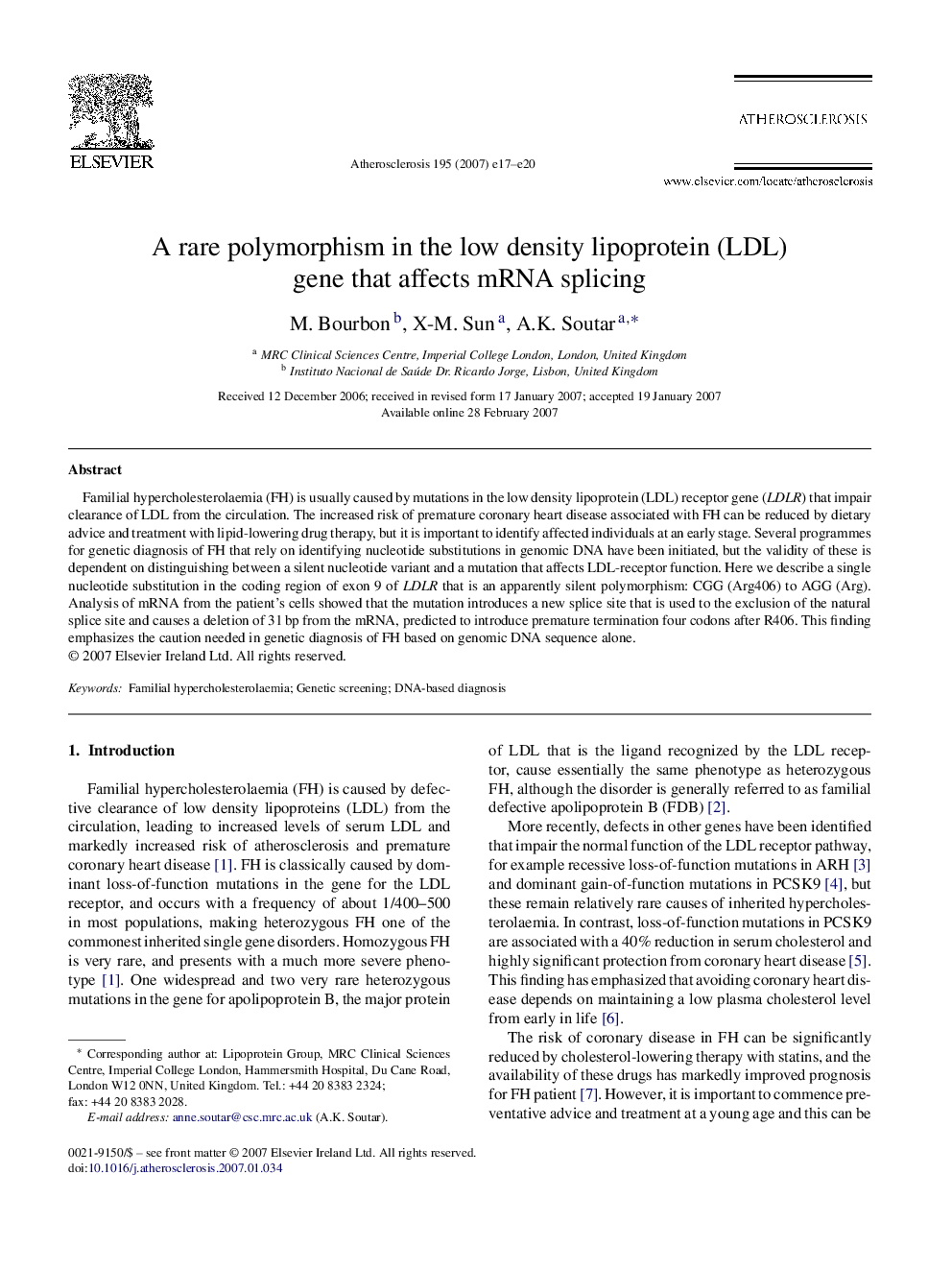| Article ID | Journal | Published Year | Pages | File Type |
|---|---|---|---|---|
| 2894274 | Atherosclerosis | 2007 | 4 Pages |
Familial hypercholesterolaemia (FH) is usually caused by mutations in the low density lipoprotein (LDL) receptor gene (LDLR) that impair clearance of LDL from the circulation. The increased risk of premature coronary heart disease associated with FH can be reduced by dietary advice and treatment with lipid-lowering drug therapy, but it is important to identify affected individuals at an early stage. Several programmes for genetic diagnosis of FH that rely on identifying nucleotide substitutions in genomic DNA have been initiated, but the validity of these is dependent on distinguishing between a silent nucleotide variant and a mutation that affects LDL-receptor function. Here we describe a single nucleotide substitution in the coding region of exon 9 of LDLR that is an apparently silent polymorphism: CGG (Arg406) to AGG (Arg). Analysis of mRNA from the patient's cells showed that the mutation introduces a new splice site that is used to the exclusion of the natural splice site and causes a deletion of 31 bp from the mRNA, predicted to introduce premature termination four codons after R406. This finding emphasizes the caution needed in genetic diagnosis of FH based on genomic DNA sequence alone.
